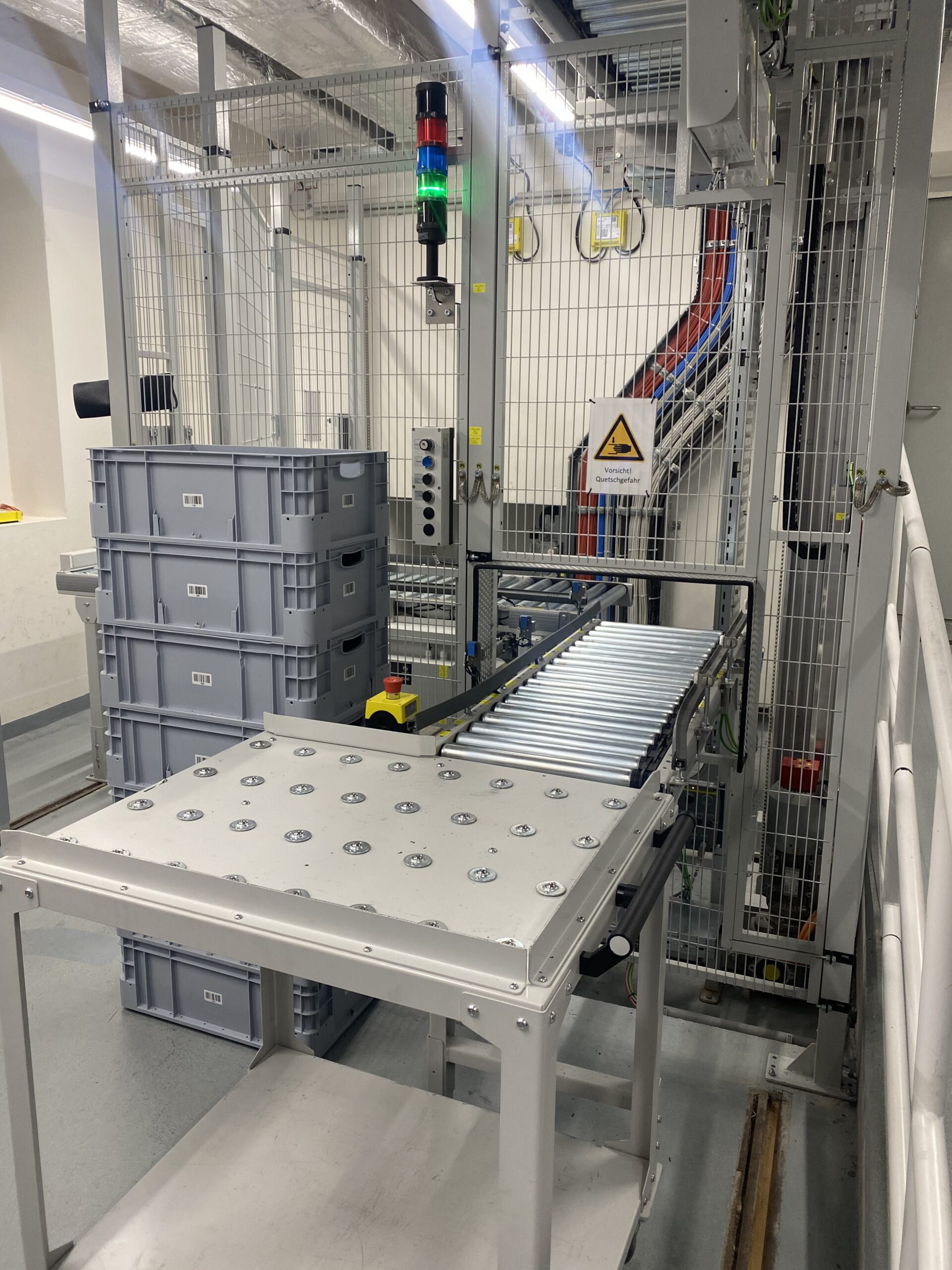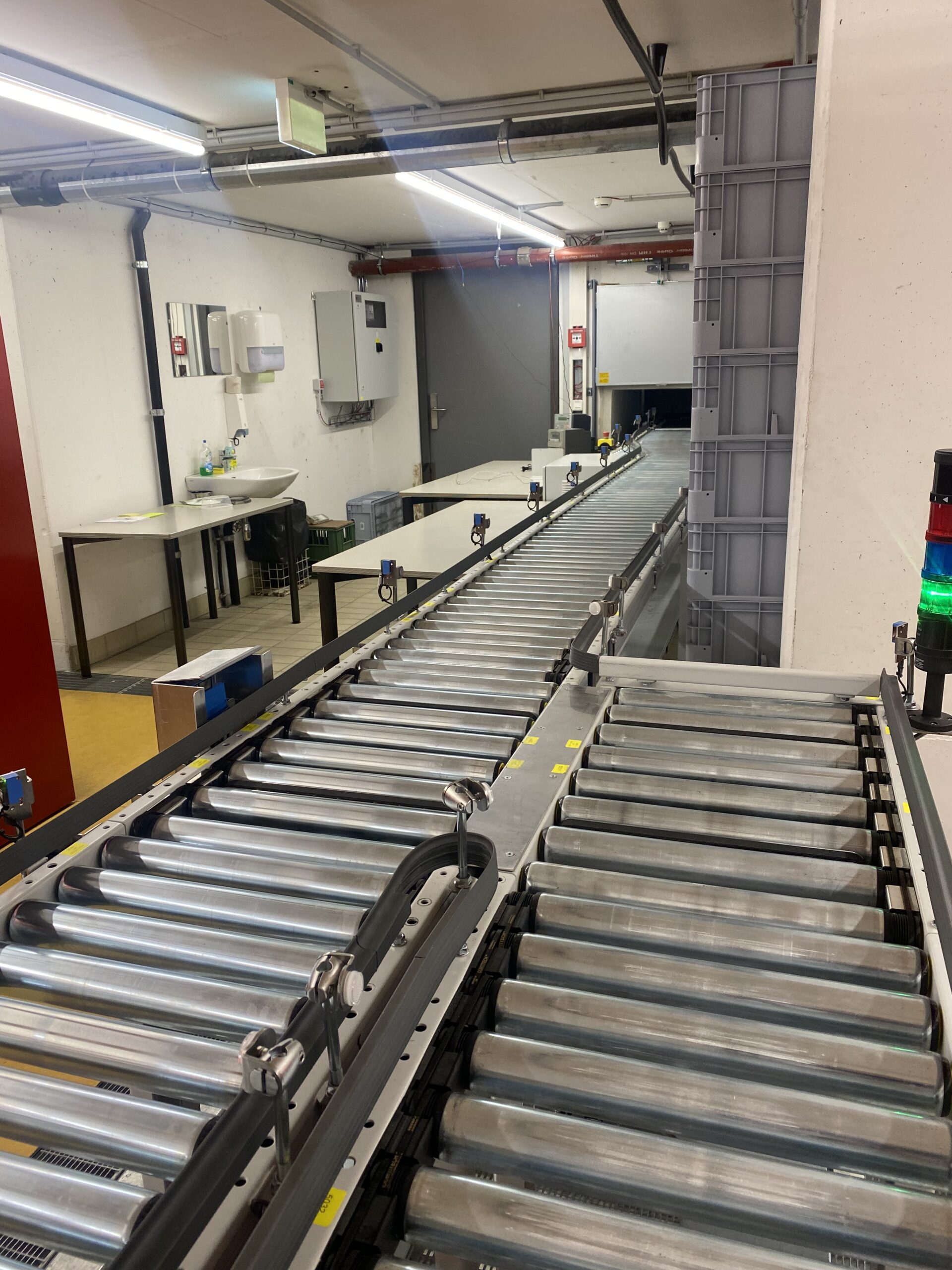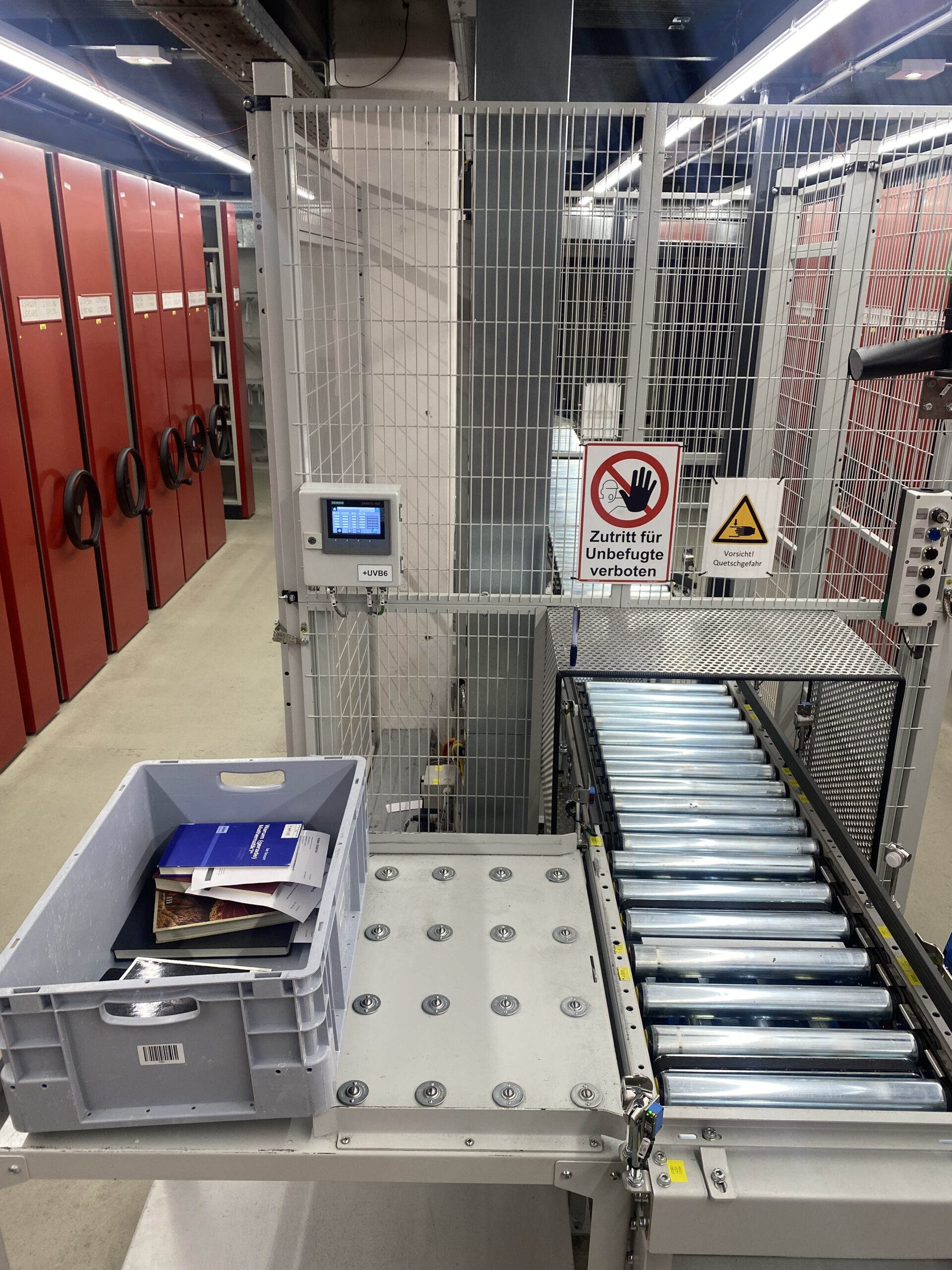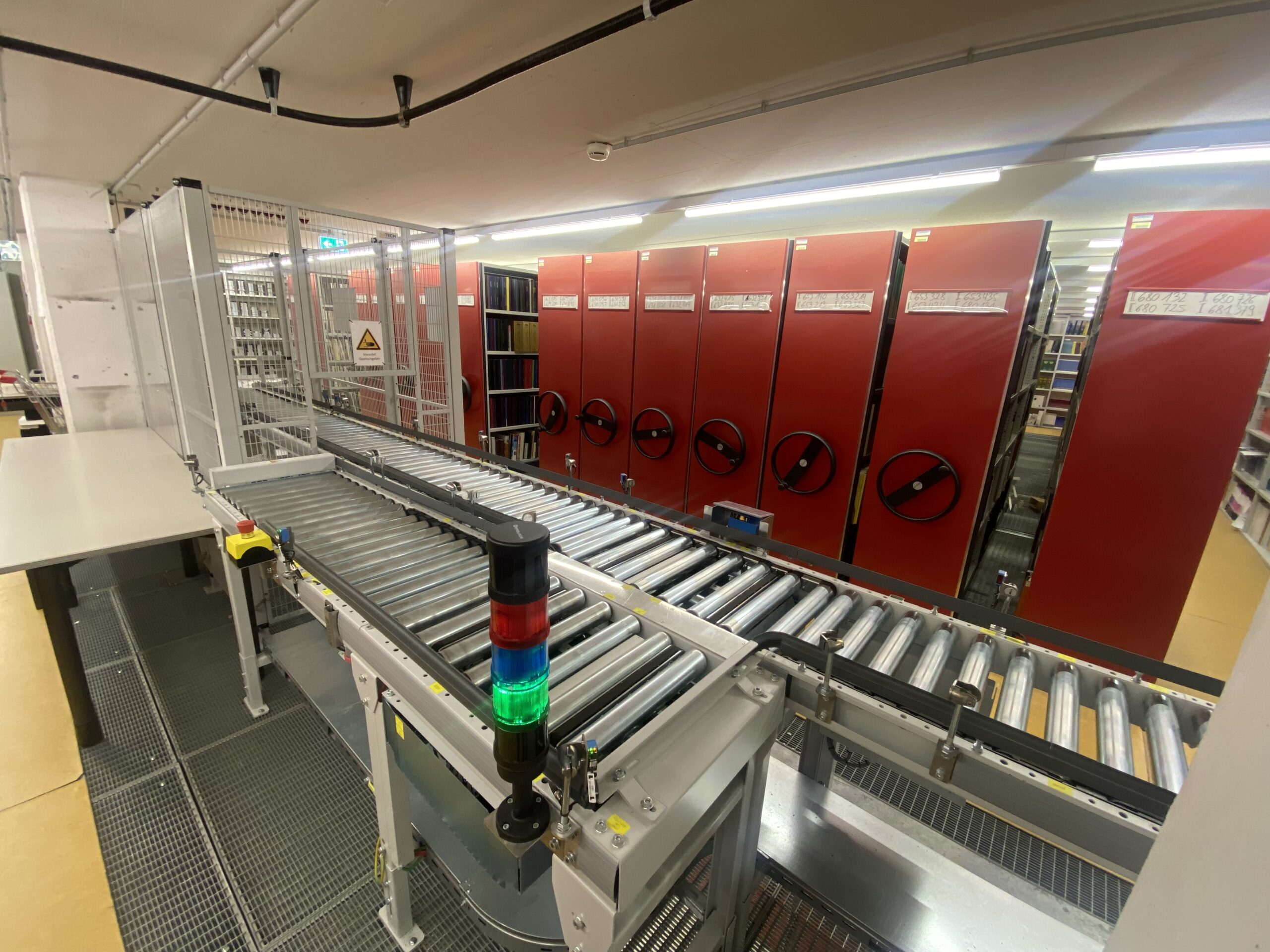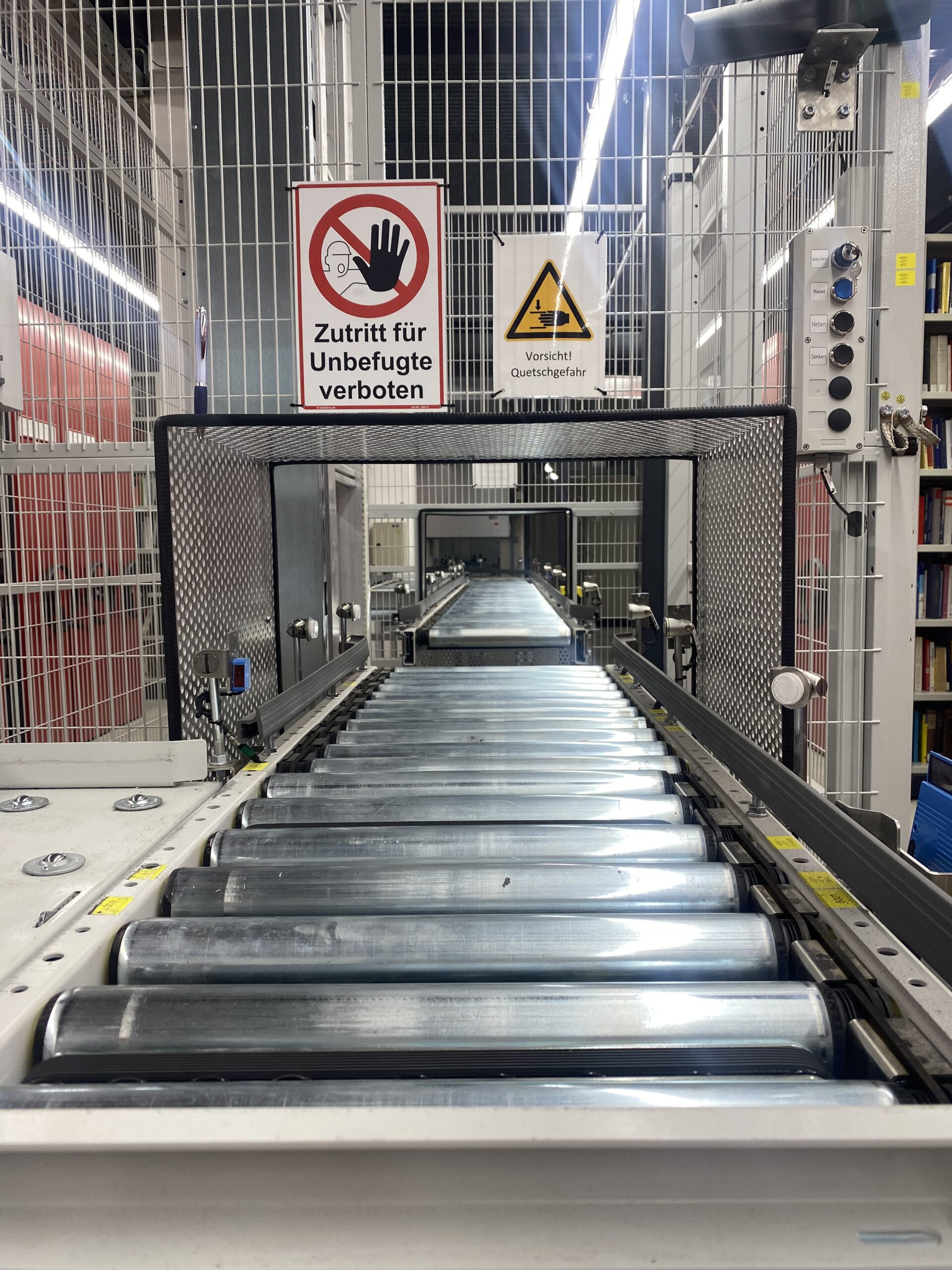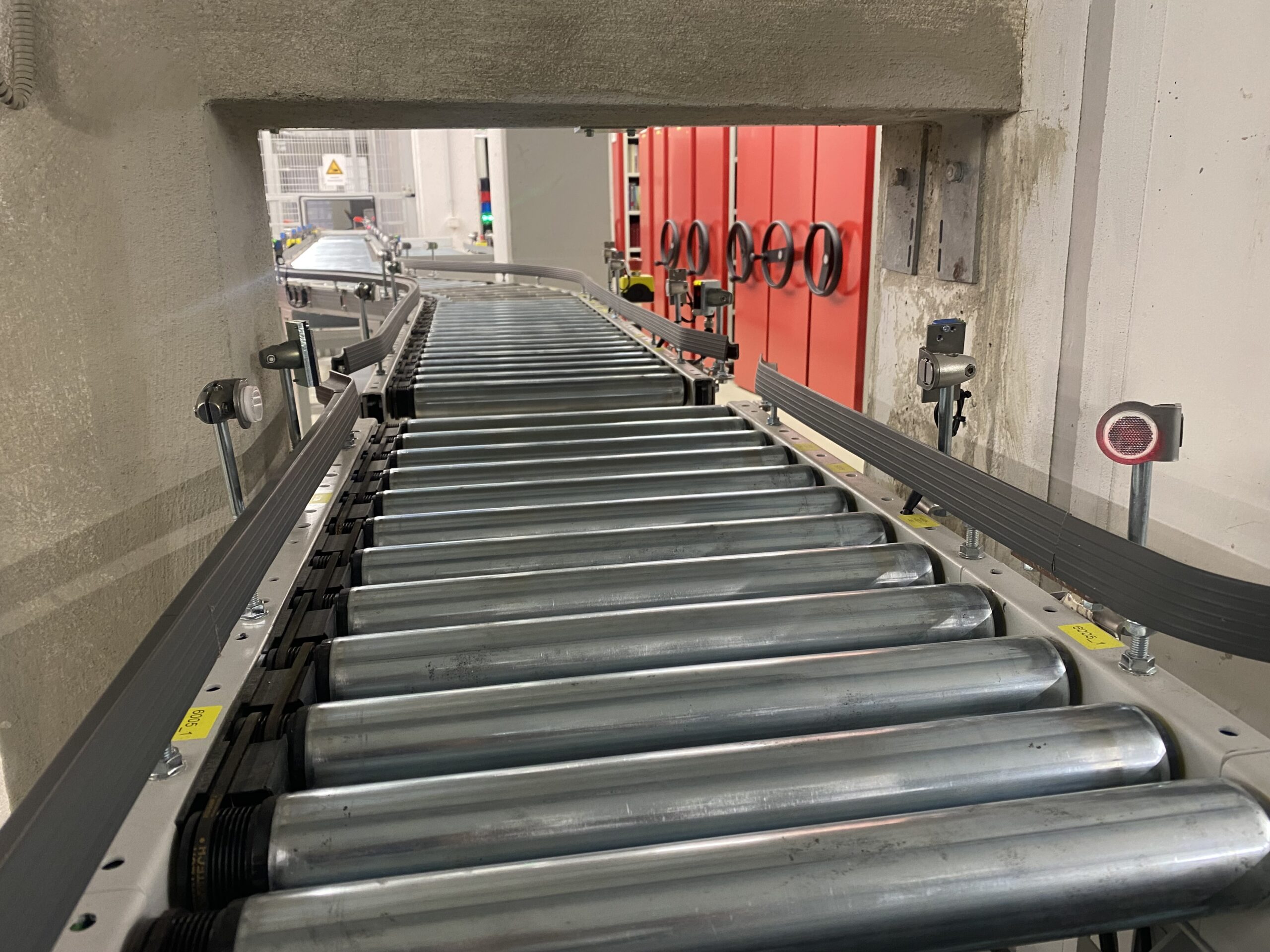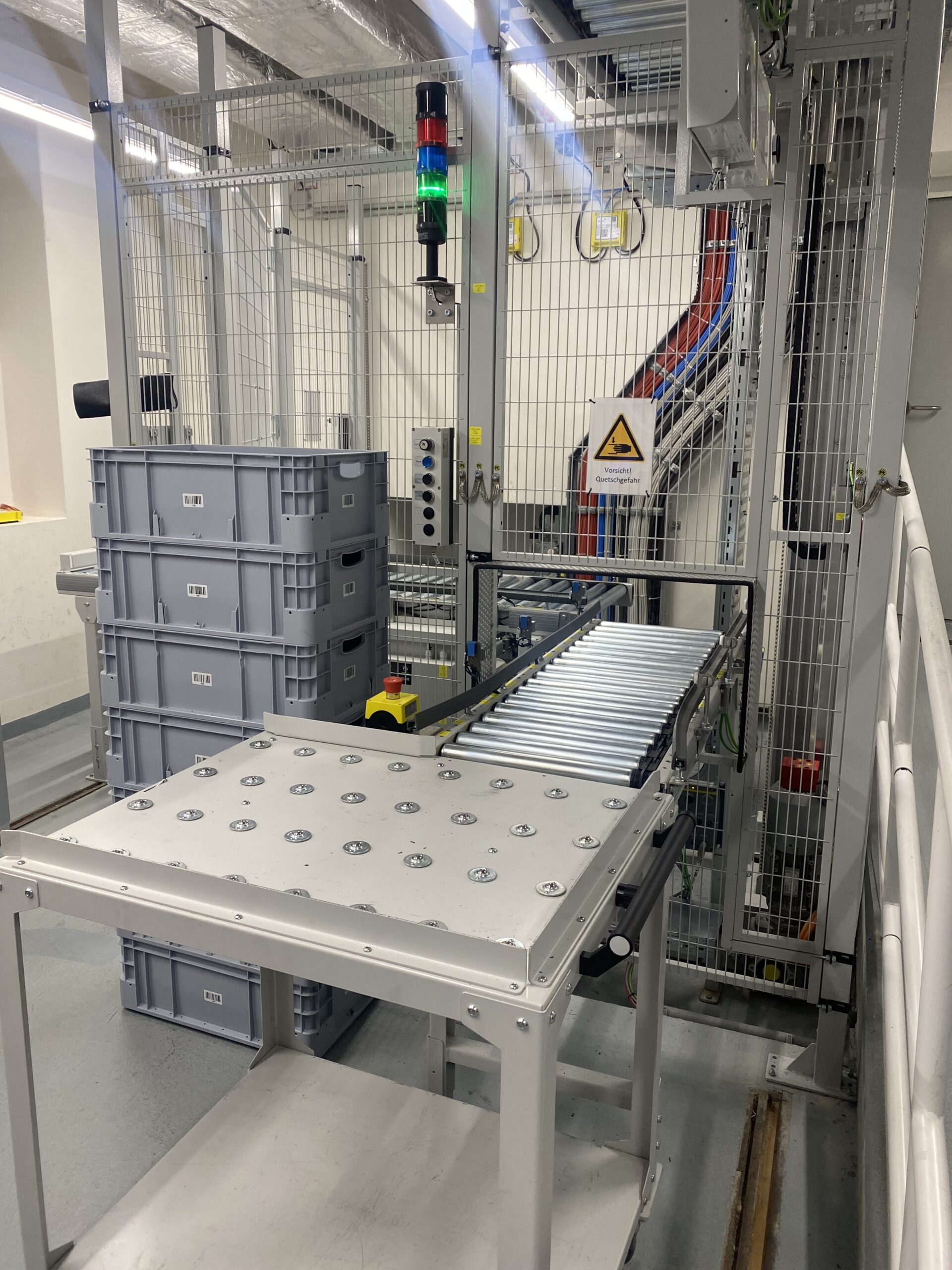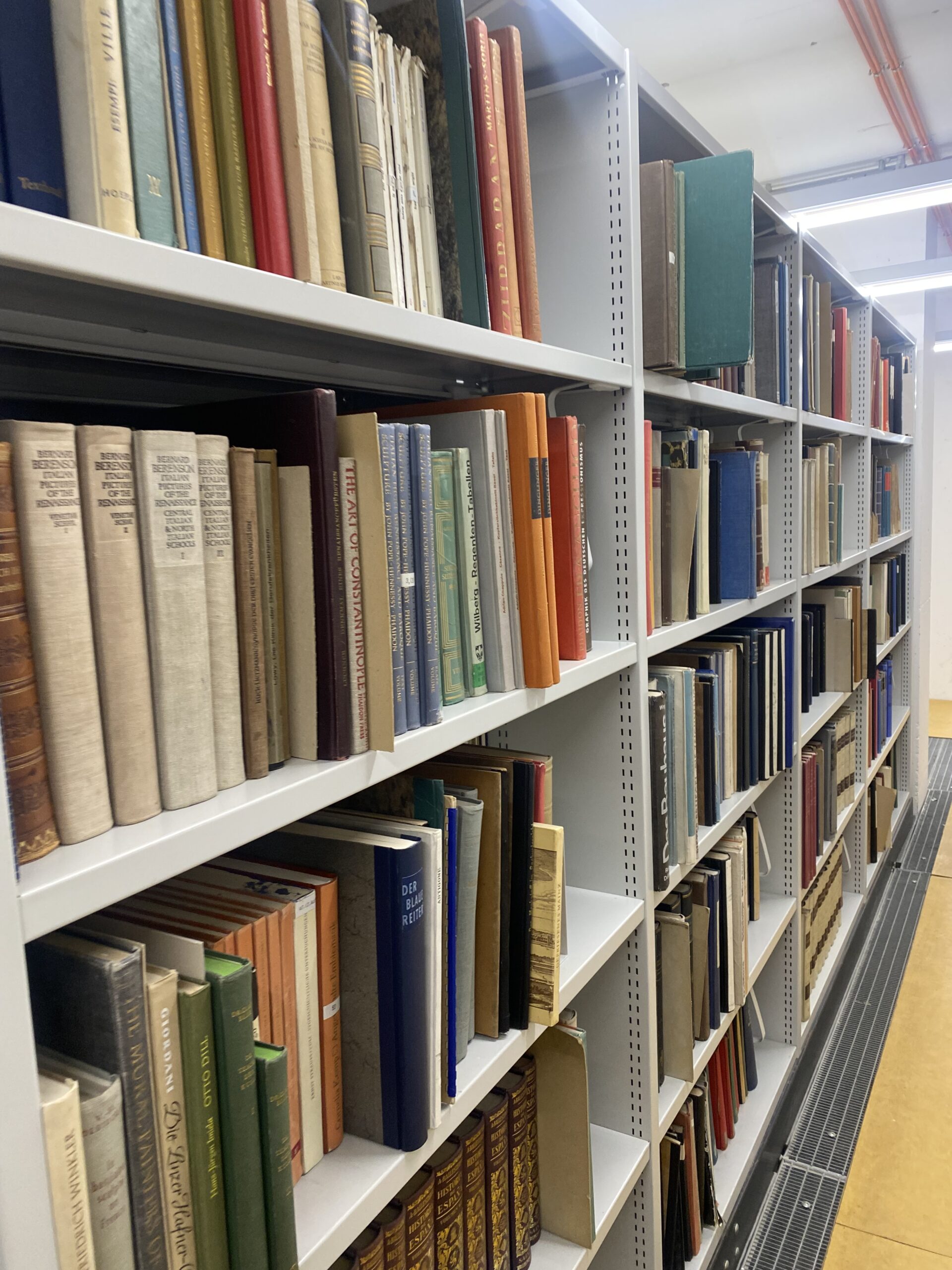UNIVERSITY OF GRAZ.
Customised, reversible book conveyor system for the simplification of throughput and the decoupling of automated and manual handling.
SUCCESS STORY
UNIVERSITY OF GRAZ
AUTOMATED BOOK CONVEYOR SYSTEM.
The University of Graz (formerly Karl-Franzens University) is the largest university in Styria and the second oldest university in Austria after Vienna. Its name is derived from Archduke Charles II of Inner Austria and Francis I of Austria. The University of Graz was founded on 1 January 1585. Spread across six faculties, it has almost 30,000 students.
- Higher educational institution, University
- Graz, Styria, Austria
- Automated book transport using reversible container conveyor technology
INITIAL SITUATION & PROJECT OBJECTIVES.
During the course of the construction project “Renovation and extension of the library of the Karl-Franzens University of Graz”, the construction of a new automated book conveyor system was also planned and implemented.
PROJECT REQUIREMENTS & CUSTOMER EXPECTATIONS.
The book conveyor system at the Karl-Franzens University in Graz is designed to connect the borrowing station on the ground floor with the storage rooms in the basement that are not accessible to external persons. The objective here is to be able to transport the books and media in containers in both directions in an automated and time-controlled manner. The book conveyor system is then operated manually by library employees at the work stations. From these stations, the books are fed to their destinations (e.g. storage shelves or borrowing stations) manually or using equipment provided by the library itself.
CUSTOMER BENEFITS OF THE 360+ Fb COMPLETE SOLUTION.
The book conveyor system from Fb Industry Automation simplifies the processes and associated work steps for borrowing and returning library books. To ensure that all valuable books can be handled carefully and efficiently on the conveyor system, these books are transported in 600 x 400 x 220mm plastic containers. Due to the different size ratios of the books, an average value of six books per container has been assumed. This means that 1,200 books per day can be handled in a resource-saving manner with only 200 storage and retrieval operations. Furthermore, this means that the book conveyor system from Fb Industry Automation can realise a throughput of at least 19 containers per hour.
DOWNLOAD CASE STUDY NOW.
- Increased throughput.
- Easy handling of high loads.
- Reversible operation.
- Low maintenance.
- Short reaction time
- Buffering options.
- Decoupling of automated and manual handling.
- User-friendly operation.
- Decentralised visualisation possible.
- Intralogistics complete solution from a single source.
DETAILED PROCESSES OF THE Fb INTRALOGISTICS SYSTEM.
The book conveyor system at the library at Karl-Franzens University consists of a main handling station (Station 1) on the ground floor and 7 distribution and picking stations in the basement.
The books required for delivery are picked manually into containers by the library employees in the respective area and automatically transported to one of the 7 handover stations. Once the container has been accepted on the station GUI (Graphical User Interface) and the container weight has been approved (max. weight of the container 35kg), the system automatically decides, after the last transport order has been completed, whether the reversible conveyor section is released for transport to the main handling station. The system always prioritises transport orders to the main handling station on the ground floor. When the employee receives authorisation, they transfer the container to the conveyor line. From there, the container is transported fully automatically to the ground floor, where it is transferred to a buffer section.
The buffer section has been designed in such a way that up to three people can have access to it and work on it at the same time. Employees can remove the full container from the buffer line and take the books effortlessly to their respective borrowing location. The empty containers can either be used to deposit the books returned or fed directly back to the basement via the conveyor line without any transported goods.
Borrowed books that have been returned are pre-sorted into 11 containers (= different rooms) at the main handling station. This saves the time-consuming task of sorting the books for the employees at the final stations in the basement. It is at the specialised personnel’s discretion to decide when or with how many books a container is ready for transport to the respective station. Before an employee receives authorisation to place the container on the conveyor line, this one must scan the container and select a transport destination on the GUI.
The container is weighed before leaving the ground floor. If the maximum weight of 35kg is exceeded, it is diverted to an error station. After a successful weighing process, the container is automatically transported to the corresponding basement level. The storage section functions as a buffer if required. The major advantage of this buffering option is that the containers to be stored do not have to remain on the ground floor while a retrieval order is being carried out. It also simplifies the prioritisation of retrieval orders. After the buffer station, the containers are transported to their assigned stations via a reversible conveyor technology system and diverted onto a powered conveyor belt.
The conveyor belt, in turn, serves as a buffer so that the automated flow of goods can be decoupled from manual handling. The employee at Karl-Franzens University Library removes a complete container and takes the books to the designated shelves for storage. The employee can then use the containers again to pick further requested books.
CUSTOMER SUPPORT AFTER PROJECT COMPLETION.
With its hotline service, Fb Industry Automation also ensures that system availability is close to 100% and that the system is restored to operational readiness as quickly as possible in the event of a fault.
Fb Industry Automation is the sole contact for the maintenance of the system and is responsible for coordinating the different trades and the proper maintenance of all sub-areas/sub-systems, while taking into account the maintenance intervals.
ANDREAS AUER
Project Manager, Fb Industry Automation
“Constructing the intralogistics system at the same time as the building renovation meant that we were constantly faced with new challenges. These we were able to manage extremely well thanks to our in-house flexibility (flat hierarchies, short decision-making channels).”
FURTHER CASES.
Hausbrot.at | Packing line | Fb Industry Automation
Hausbrot.at supplies kindergartens, businesses, and private households daily with fresh baked goods and other food products. However, with around 1,000 orders per day, the company reached the limits of its manual warehouse management. To meet the increasing demands, Hausbrot.at decided to undertake a comprehensive modernization of its intralogistics. In collaboration with Fb Industry Automation, a highly automated warehouse system was developed and implemented, which not only significantly increased efficiency but also minimized error rates and improved working conditions. Curious about how this project was realized? Discover all the details in our case study!
BIG Bundesimmobiliengesellschaft – library of the university Graz
During the realisation of the construction project “Renovation and extension” of the library of the Karl-Franzens University of Graz”, the section of the library built in the 1970s created an obstacle to this important urban development. The historic library building has been transformed over several construction phases from the original clarity of its symmetrical late-19th century layout to a complex conglomerate of different room sequences.
Sustainability for your intralogistics
Admittedly, change always sounds like a big challenge. But they are also opportunities for further development in a constantly changing market. But how can sustainability be implemented in your company? We show you simple ways in which we can modernize your systems and how artificial intelligence can simplify your processes.
